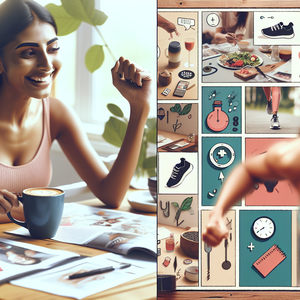The Hidden Job Market: Finding Entry-Level UI/UX Positions

The hidden job market encompasses job vacancies that are filled through means other than standard job postings. Many of these roles are filled through internal promotions, referrals, or networking connections before they are ever listed publicly. Research indicates that a substantial percentage of job opportunities—sometimes as much as 80%—are secured through personal connections or networking efforts. For UI/UX designers just starting their careers, understanding this landscape is crucial for strategically positioning themselves to discover these hidden opportunities.
Networking: Building Professional Relationships
One of the most effective ways to access the hidden job market is by building a robust professional network. Here are some actionable tips for networking effectively: 1. **Attend Industry Events**: Participating in UI/UX conferences, meetups, workshops, and seminars provides valuable opportunities to meet industry professionals, learn about the latest trends, and forge important connections. For example, attending events like UXPA International or local design meetups can expose you to hiring managers and other designers who may know of unadvertised roles. 2. **Join Professional Associations**: Organizations such as the Interaction Design Association (IxDA) or User Experience Professionals Association (UXPA) often have local chapters that host networking events and provide access to exclusive job boards. Being part of these associations not only enhances your credibility but also connects you to like-minded professionals. 3. **Leverage Informational Interviews**: Reaching out to established professionals for informational interviews is a proactive approach to gain insights into the industry. This not only helps you learn more about their career paths but also allows you to express your interest in potential openings. Many professionals appreciate the opportunity to mentor newcomers and may refer you to opportunities they know of.
Utilizing Social Media for Job Discovery
Social media platforms are powerful tools for uncovering hidden job opportunities. Here’s how to leverage them effectively: 1. **LinkedIn**: Maintaining an updated LinkedIn profile that highlights your skills, projects, and experiences is essential. Use the platform to connect with UI/UX professionals, join relevant groups, and engage in discussions. Many companies post job openings on LinkedIn before they advertise them elsewhere, making it a goldmine for job seekers. 2. **Twitter**: Following industry leaders, companies, and pertinent hashtags related to UI/UX design can provide valuable insights. Engaging with content and participating in discussions can lead to connections that may inform you about job openings before they are widely advertised. For instance, following hashtags like #UXJobs or #UIDesign can keep you updated on new opportunities. 3. **Facebook Groups**: Joining Facebook groups dedicated to UI/UX design can be incredibly beneficial. These communities frequently share job postings, freelance opportunities, and advice on breaking into the field. Engaging with group members not only helps you gain insights but can also lead to referrals for job openings.
Tapping into Online Communities
Online communities and forums offer a wealth of resources for job seekers. Here’s how to maximize your involvement: 1. **Design Platforms**: Websites like Dribbble and Behance not only allow designers to showcase their portfolios but also have job boards where companies post openings for UI/UX roles. Regularly checking these platforms can provide leads on new positions that align with your skill set. 2. **Reddit**: Subreddits such as r/userexperience and r/web_design serve as platforms for discussions and job postings. Engaging with these communities can help you stay informed about potential opportunities and gain valuable insights into the industry. 3. **Slack Channels**: Many design-focused Slack channels exist where members share job postings and offer support. Joining these channels can provide direct access to hidden job leads and allow you to network with other designers actively.
Navigating the hidden job market may seem challenging, but with the right strategies, aspiring UI/UX designers can uncover valuable entry-level opportunities. By building a professional network, utilizing social media, and engaging with online communities, you can position yourself for success in your job search. Remember, the key to discovering these hidden roles lies in proactive engagement and relationship-building. So, get out there, connect with others in the field, and you may just discover the job of your dreams waiting for you in the hidden job market.
Junior UI Designer
Tech startups, digital agencies, and e-commerce platforms
Core Responsibilities
Collaborate with senior designers to create engaging and visually appealing user interfaces for websites and applications.
Assist in conducting user research and usability testing to gather feedback and improve design solutions.
Create wireframes, mockups, and prototypes using design tools like Sketch, Figma, or Adobe XD.
Required Skills
Proficiency in design software and a strong portfolio showcasing your design work.
Understanding of design principles, color theory, and typography.
Basic knowledge of HTML/CSS is a plus.
UX Research Assistant
User experience design firms, product teams in large corporations, and market research agencies
Core Responsibilities
Support UX researchers in gathering qualitative and quantitative data through user interviews, surveys, and usability testing.
Analyze research findings to help inform design decisions and enhance user experiences.
Assist in creating user personas and journey maps based on research insights.
Required Skills
Strong analytical skills and the ability to synthesize data into actionable insights.
Familiarity with user research methodologies and tools like UserTesting or Optimal Workshop.
Excellent communication skills for presenting research findings to stakeholders.
Entry-Level Interaction Designer
Digital product companies, mobile app developers, and design consultancies
Core Responsibilities
Design interactive elements and workflows for applications, ensuring they meet user needs and enhance usability.
Collaborate with developers and product managers to implement interactive designs and assess their effectiveness.
Create prototypes and conduct A/B testing to validate design choices.
Required Skills
Knowledge of interaction design principles and user-centered design processes.
Familiarity with prototyping tools like InVision or Axure.
Strong problem-solving skills and an ability to think critically about user interactions.
Visual Designer (UI Focus)
Advertising agencies, branding firms, and tech startups
Core Responsibilities
Create high-fidelity visual designs that align with brand guidelines and enhance the overall user experience.
Work closely with UX designers to ensure the visual design complements the user journey.
Prepare design specifications and assets for development.
Required Skills
Strong visual design skills with a portfolio that demonstrates creativity and attention to detail.
Proficiency in design software such as Adobe Creative Suite (Photoshop, Illustrator).
Understanding of responsive design principles and mobile-first design.
Product Design Intern
Technology companies, startups, and design agencies looking for fresh talent
Core Responsibilities
Assist in the design and development of product features through user research, wireframes, and prototypes.
Participate in cross-functional team meetings to provide design insights and feedback on product direction.
Help document design processes and maintain design systems.
Required Skills
Basic understanding of UI/UX design principles and familiarity with design tools.
Eagerness to learn and adapt to new design challenges.
Strong teamwork and communication skills.


